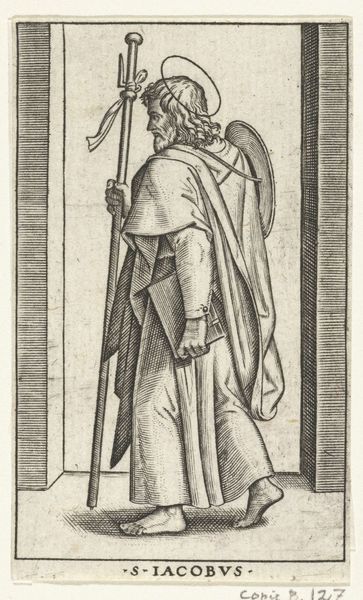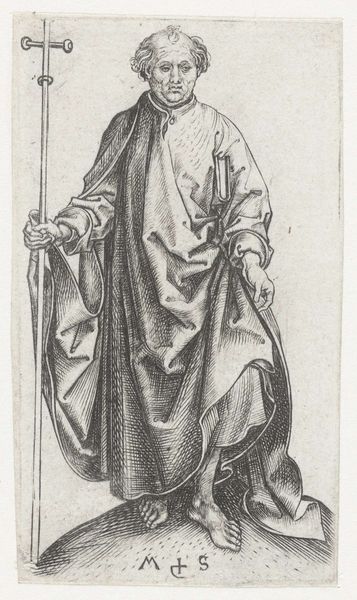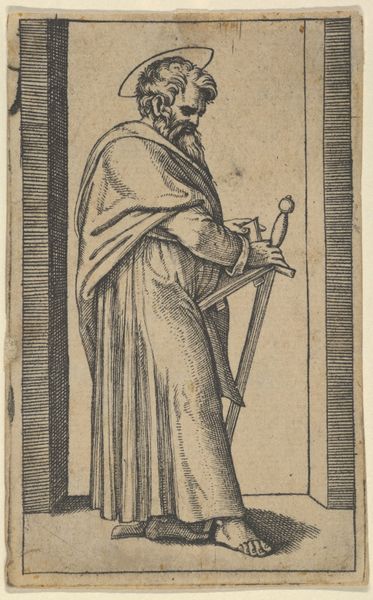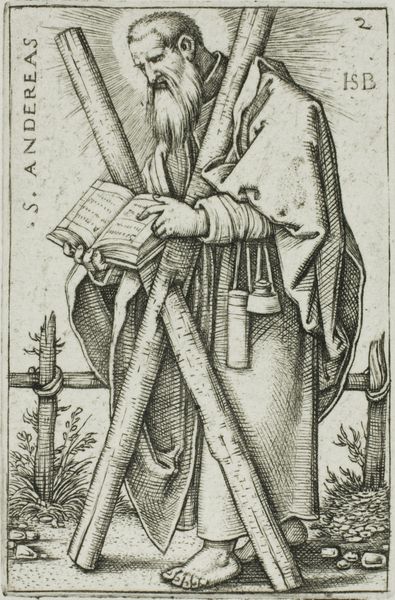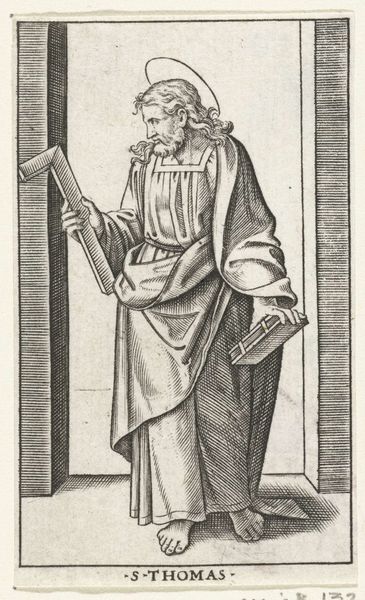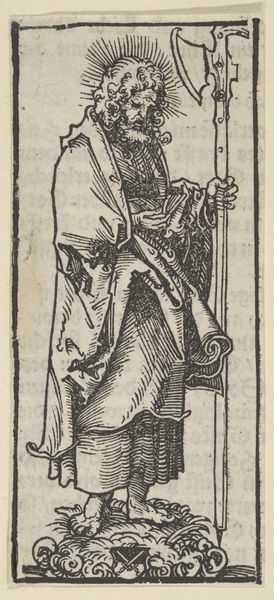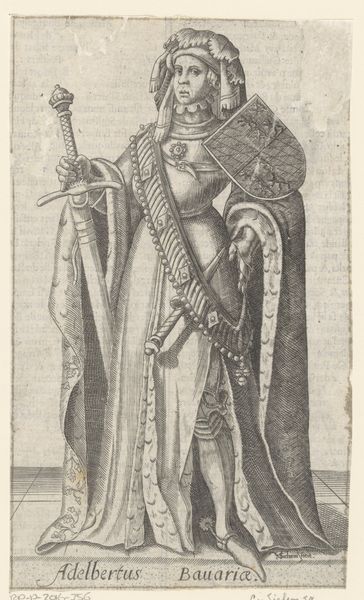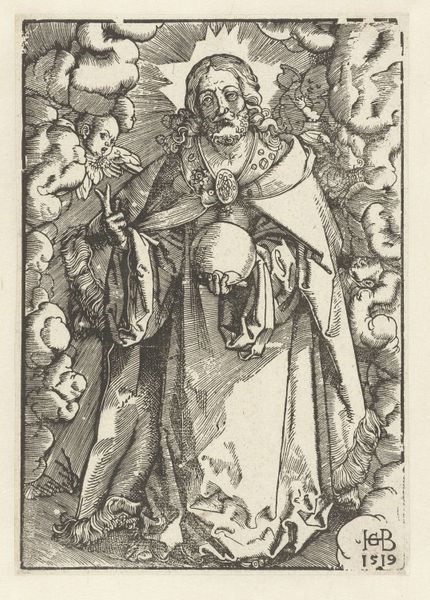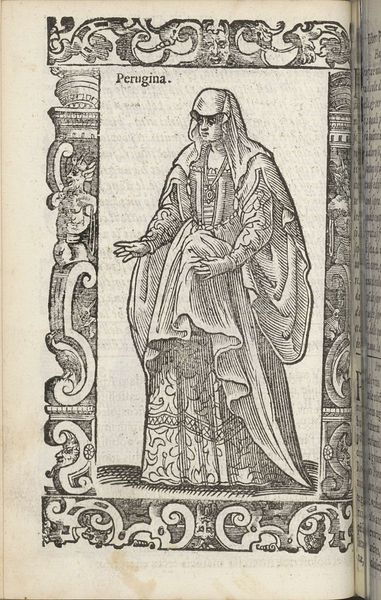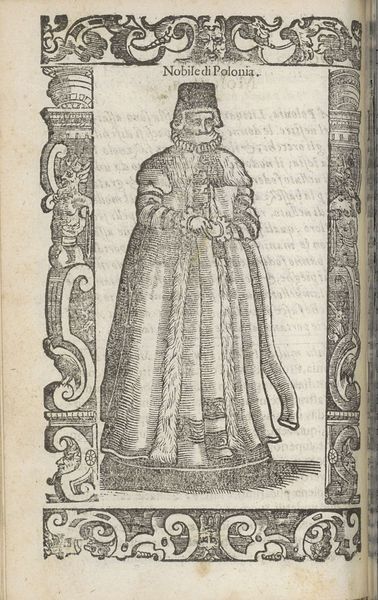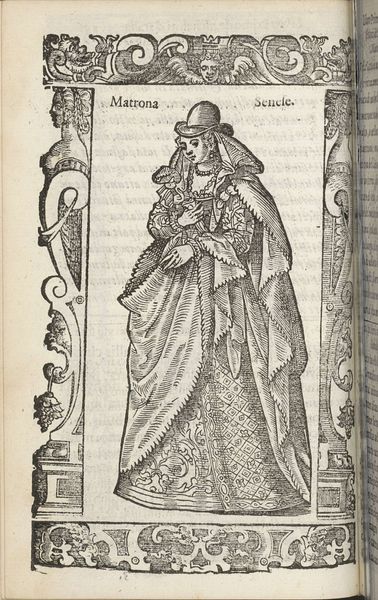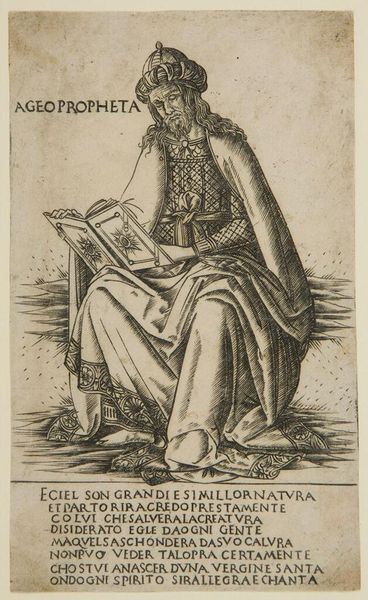
The Prophet Malachi, from "Prophets and Sibyls" 1480 - 1490
0:00
0:00
drawing, print, engraving
#
portrait
#
drawing
#
medieval
# print
#
italian-renaissance
#
engraving
Dimensions: Plate: 7 × 4 1/4 in. (17.8 × 10.8 cm) Sheet: 11 9/16 in. × 8 in. (29.3 × 20.3 cm)
Copyright: Public Domain
Editor: So, here we have "The Prophet Malachi, from "Prophets and Sibyls," an engraving that dates back to somewhere between 1480 and 1490. Looking at it, I'm struck by the Prophet's gaze. It seems so intense. What do you see in this piece? Curator: This engraving gives us an entry point into the intersection of religion, politics, and identity during the Italian Renaissance. Think about the role of prophets in society, particularly how their messages challenged power structures. How might Malachi's message, and its interpretation at the time, have resonated with marginalized groups or those critical of the Church's authority? Editor: So, it's not just about the religious figure himself, but the context of how his image and message were received? Curator: Precisely! Consider the visual elements – his clothing, posture, and the text surrounding him. What do those details tell us about how power and authority were constructed and challenged during that time? Engravings like this circulated widely, becoming powerful tools in shaping public opinion and even inciting social change. What kind of political or social "statements" can you interpret in this image? Editor: The text at the bottom...I wonder what impact his words could have had then? I hadn't really considered that images were more than just pretty pictures, they also might've carried potentially dangerous ideas. Curator: Absolutely. This image is less a devotional portrait and more a political manifesto cleverly disguised within religious iconography. And to think, a simple engraving could be such a powerful tool for social commentary! Editor: Wow, I definitely see it differently now. It really underscores the relationship between art and activism in the Renaissance.
Comments
No comments
Be the first to comment and join the conversation on the ultimate creative platform.
